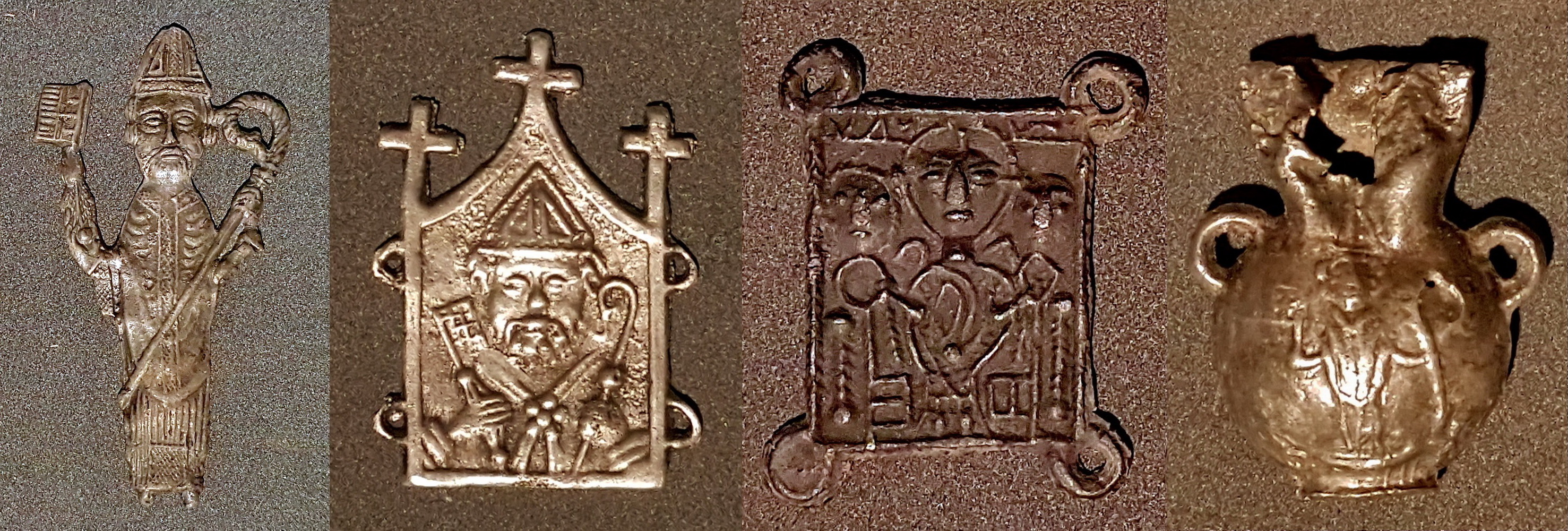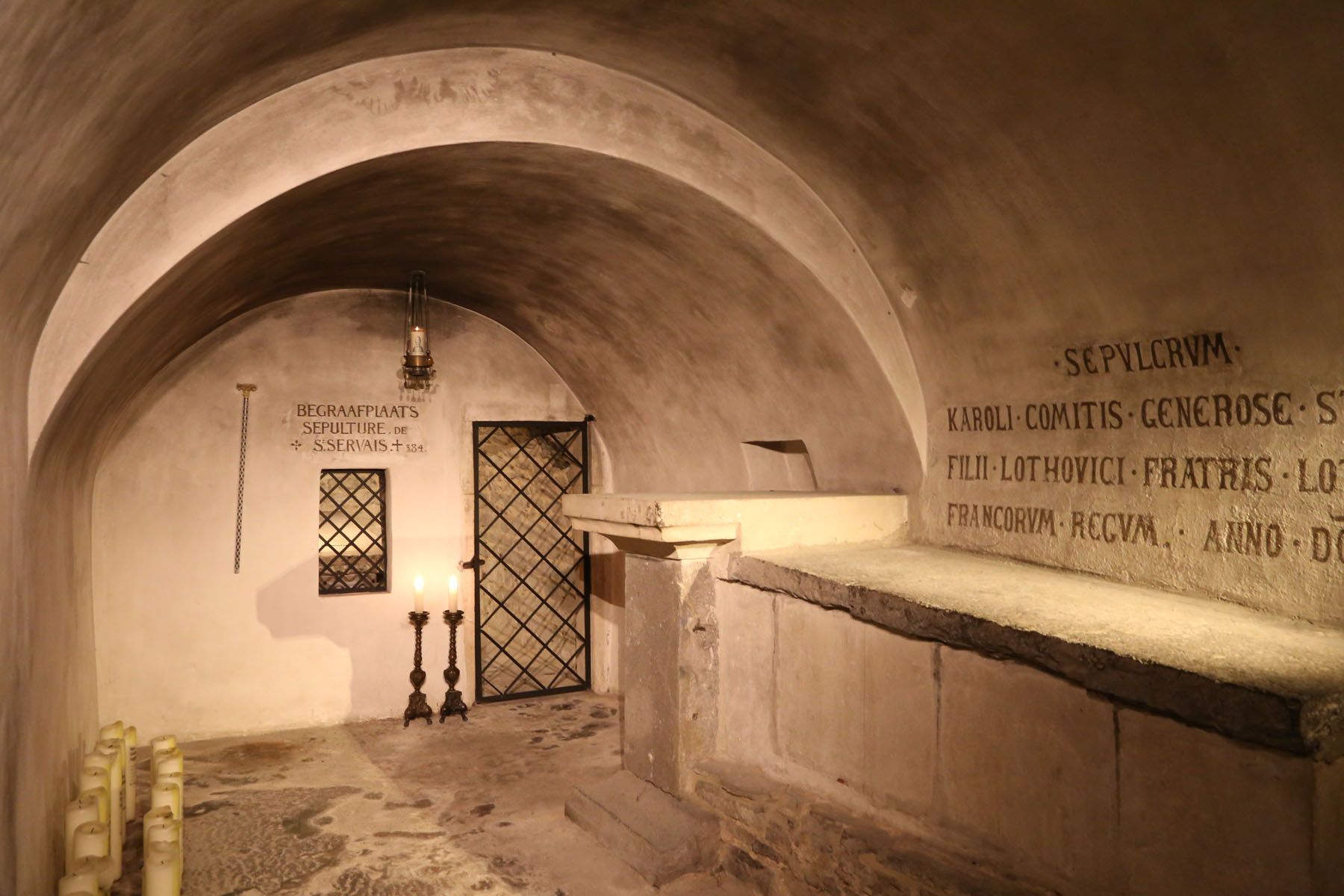Pilgrimage
The Basilica of Saint Servatius has grown into an important pilgrimage site over the centuries. The oldest reports of pilgrimage to the tomb of Saint Servatius date from the sixth century. In the late Middle Ages, pilgrims travelled from all over Europe to Maastricht to visit the tomb of the holy bishop. Famous visitors include Charlemagne, the Holy Emperor Henry II and Saint Bernard of Clairvaux. Today, the tomb can be visited daily in combination with an entrance ticket to the Treasury/Basilica.

pilgrims' insignia of Saint Servatius
Saint Servatius
Little is historically known about Servatius. Legend has it that he was born in Armenia, lived in the fourth century and was the tenth and last bishop of Tongeren. Due to political turmoil, at the end of his life Servatius moved the episcopal see to Maastricht, becoming the first bishop and first proclaimer of the Christian faith in the Netherlands. He died in the year 384 AD. The Basilica of St. Servatius was built above his grave.
The key to heaven
According to legend, Servatius was a fierce combatant of Arianism and a direct descendant of Jesus Christ and John the Baptist. During a visit to Rome, the apostle Saint Peter presented Servatius with a key to Heaven’s gate. This key, as well as a fresco depicting this scene, can be admired in the Treasury of Saint Servatius.
Relics and Shrine of Servatius
Saint Servatius’ relics are kept within two impressive shrines. In times of need and during special processions (such as the Maastricht Septennial Pilgrimage/‘Heiligdomsvaart’), his shrine is carried around the city centre of Maastricht. As a pilgrimage church, the Servaas basilica is visited by the parishes of the deanery of Maastricht every year during the Servaasweek. Traditionally, various parishes, home and abroad, also visit the saint's grave once a year.

The Maastricht Septennial Pilgrimage (Heiligdomsvaart) since 1391
During this special, seven-yearly, religious event, the relics of Saint Servatius are displayed in public during two outdoor processions. A wonderful tradition that unites the church, the city of Maastricht and anyone who wants to join the celebrations.
The Maastricht Septennial Pilgrimages are organised by The Tomb of Sint Servatius Association.
Book of intentions
During your visit to Saint Servatius, you can also entrust your thoughts, concerns and questions to the book of intentions, located in the chapel. Many fellow believers, parishioners, locals and tourists preceded you. The written intentions are brought in a procession to the tomb of Saint Servatius every Monday morning.


